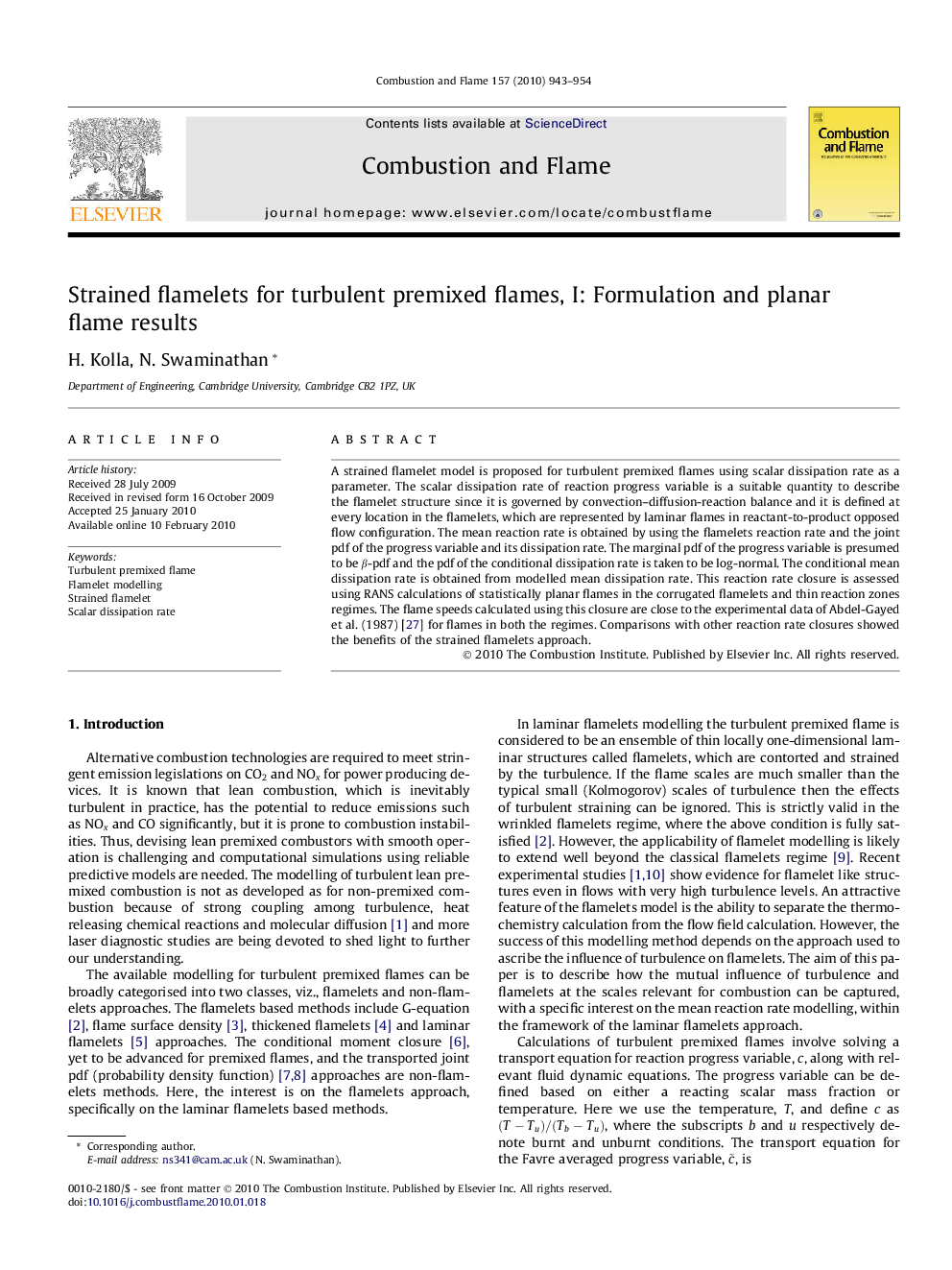| Article ID | Journal | Published Year | Pages | File Type |
|---|---|---|---|---|
| 169653 | Combustion and Flame | 2010 | 12 Pages |
A strained flamelet model is proposed for turbulent premixed flames using scalar dissipation rate as a parameter. The scalar dissipation rate of reaction progress variable is a suitable quantity to describe the flamelet structure since it is governed by convection–diffusion-reaction balance and it is defined at every location in the flamelets, which are represented by laminar flames in reactant-to-product opposed flow configuration. The mean reaction rate is obtained by using the flamelets reaction rate and the joint pdf of the progress variable and its dissipation rate. The marginal pdf of the progress variable is presumed to be ββ-pdf and the pdf of the conditional dissipation rate is taken to be log-normal. The conditional mean dissipation rate is obtained from modelled mean dissipation rate. This reaction rate closure is assessed using RANS calculations of statistically planar flames in the corrugated flamelets and thin reaction zones regimes. The flame speeds calculated using this closure are close to the experimental data of Abdel-Gayed et al. (1987) [27] for flames in both the regimes. Comparisons with other reaction rate closures showed the benefits of the strained flamelets approach.
